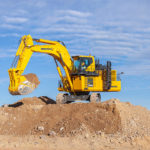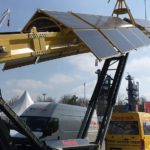In many ways, Industry 4.0 has yet to achieve widespread proliferation throughout fluid power machinery as it seemed we were promised. Baby Boomers are still waiting for their flying cars as promised by the Jetsons. It’s been nearly sixty years since the Jetsons got our hopes up, so I hope it doesn’t take so many decades before my google glasses are showing me how many hours are on my return filter.

Adaption of accoutrement in the Industry 4.0 closet has dressed up some industries more than others. The mobile machine industry was once considered the paupers compared to high tech, electrified industrial hydraulics. As far as Industry 4.0, I may argue the tables have turned.
As a hydraulic system designer, I can tell you the everyday demand for small-scale digital age technology is low in the industrial realm. Conversely, mobile hydraulics have adapted and flourished with the addition of integrated electronic control systems. Telematics, especially, enhanced mobile machinery in ways previously impossible.
Telematic systems connect mobile machine controllers to cellular networks through a CAN-BUS modem. Once connected to a cellular network, every machine function and parameter may be monitored on a mobile device or PC workstation. Power unit parameters, machine speed and GPS location, sensor data, idle time, fuel economy, and even emissions may all display to you live anywhere at any time.
The information provided helps the drivers and their fleets optimize machine performance and efficiency and make predictions regarding maintenance and service. Machine operators are rarely heavy equipment mechanics. Imagine how monitoring hydraulic performance parameters such as pressure, flow, pump data and actuator position remote help mechanics diagnose failures remotely.
Geofencing is a technique unique to telematics, where software tracks the machine or vehicle location using its GPS signal. Geofencing may be used for warning operators when driving onto private land or outside their most efficient path.
When combined with the machine controller, the GPS functions can direct the machine automatically through its preset path. Imagine farming where tractors take advantage of precision farming. Field maps, variable rate application of seed/fertilizer/water and even automated soil sampling are all made easy with telematics. Imagine as well how a field map helps a farmer work through low visibility conditions or even darkness.
Telematics and geomapping work in 3D environments as well. As we speak, manufacturers are prototyping and testing early model self-flying vehicles using precision maps in three axes. It won’t be long before these vehicles taxi us around while we watch reruns of the Jetsons.






